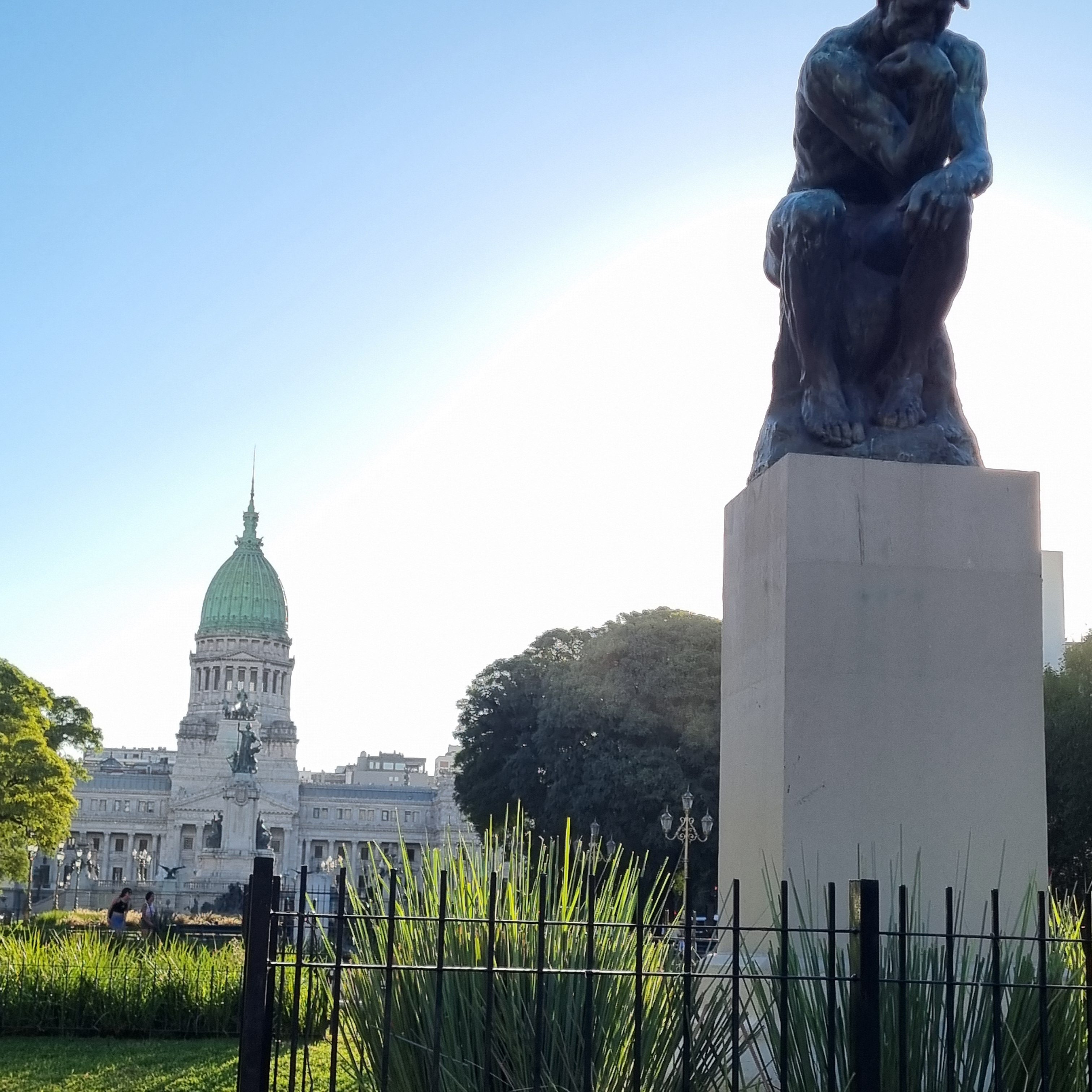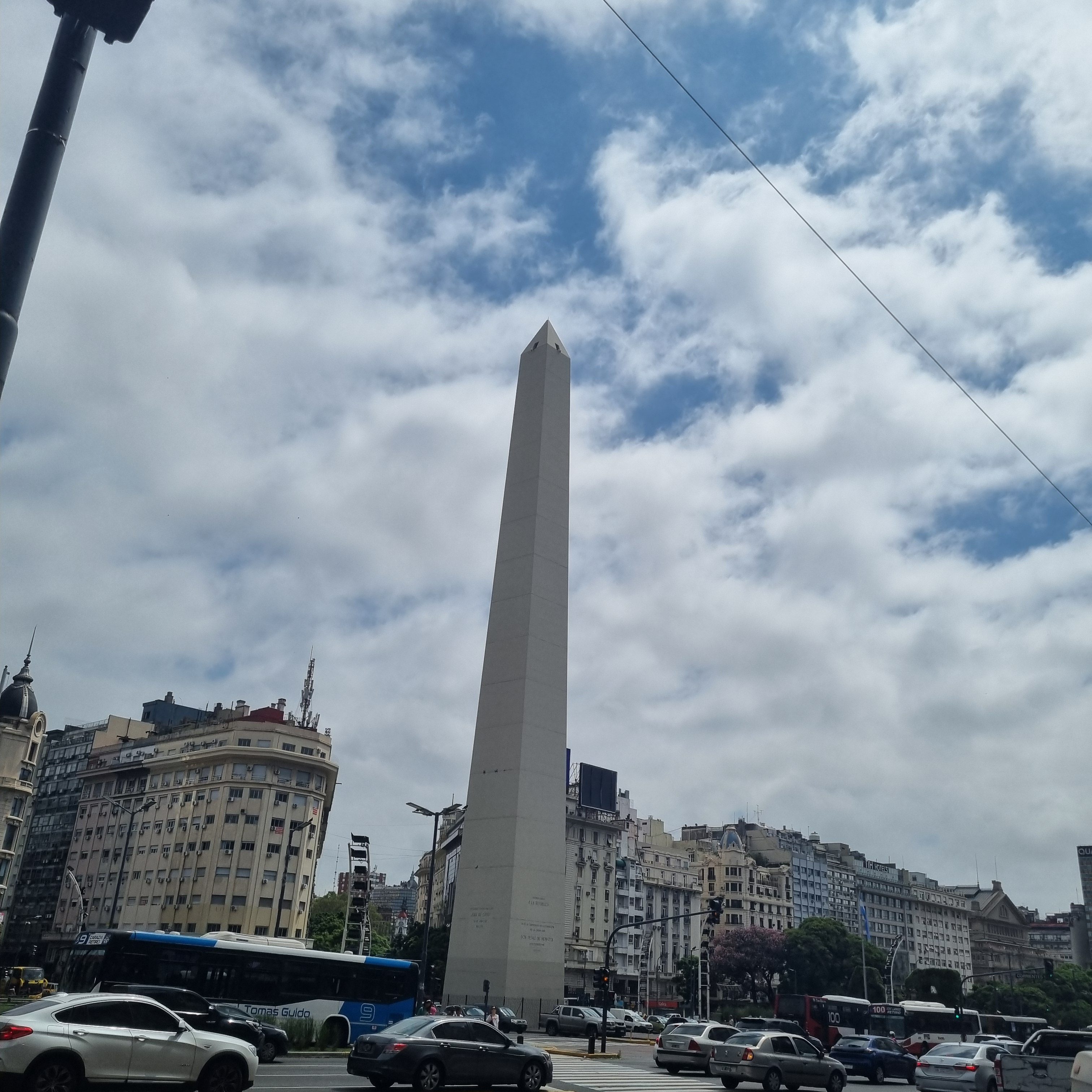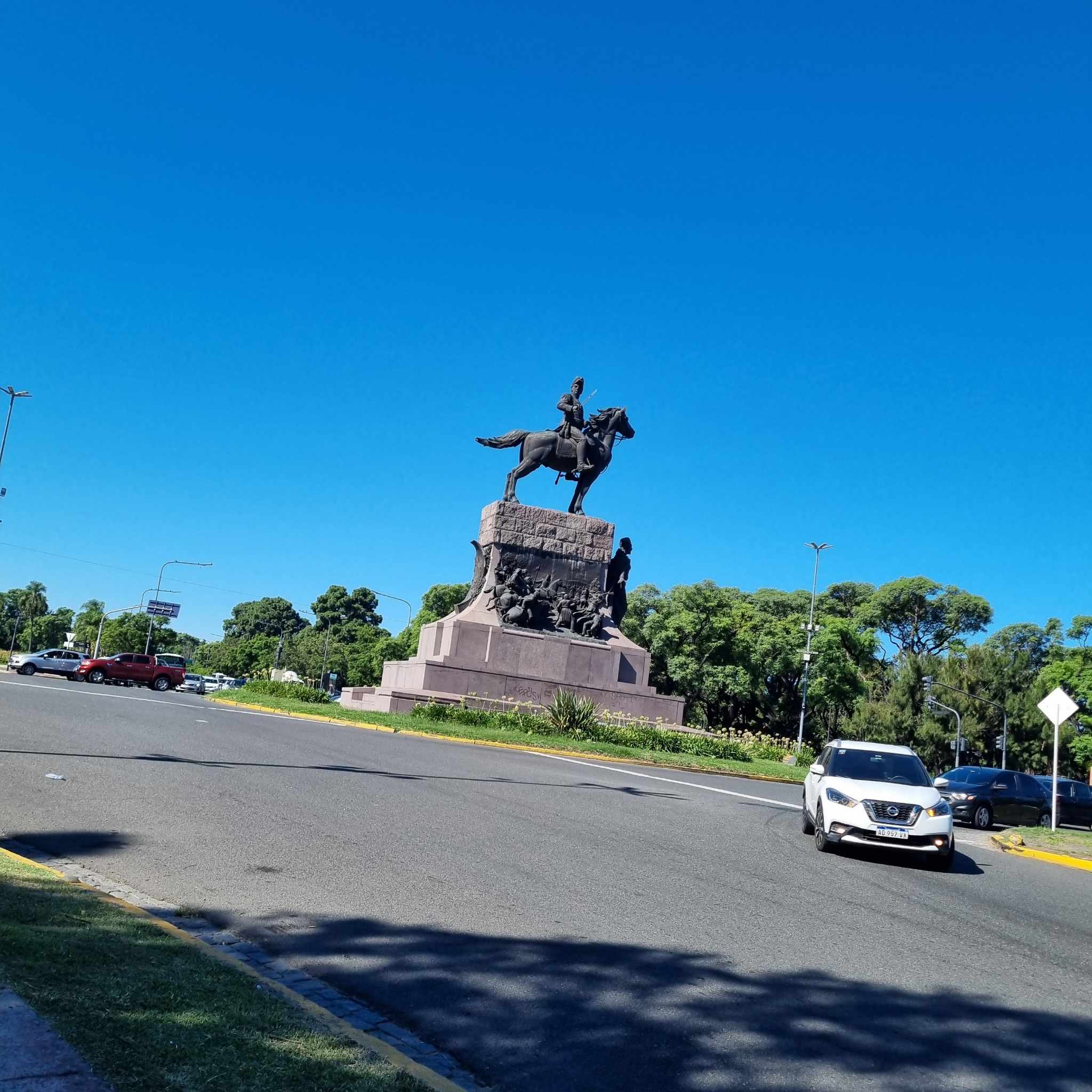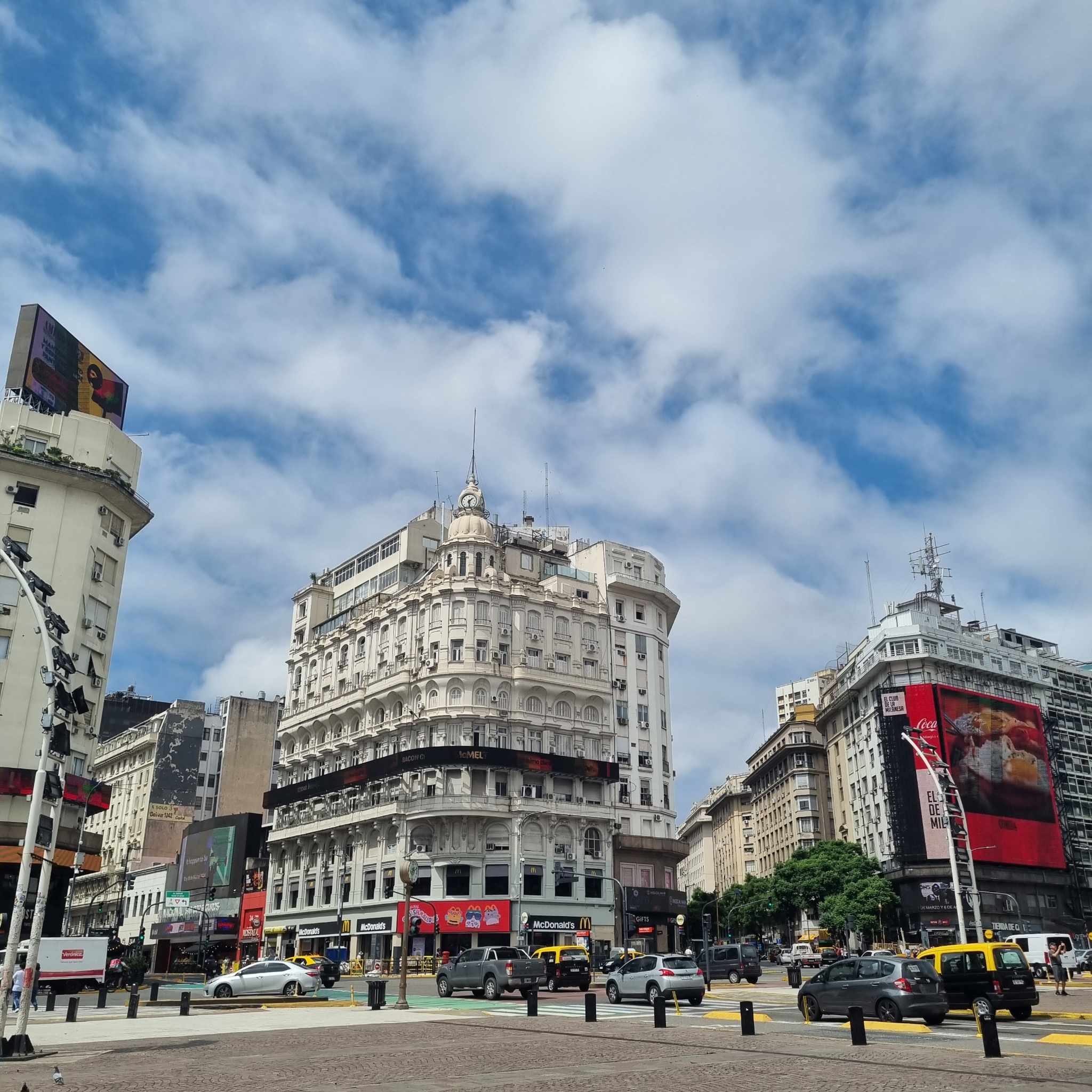On the Other Side of the World: Argentina Welcomed with Economic Crisis, Heat, and European Culture
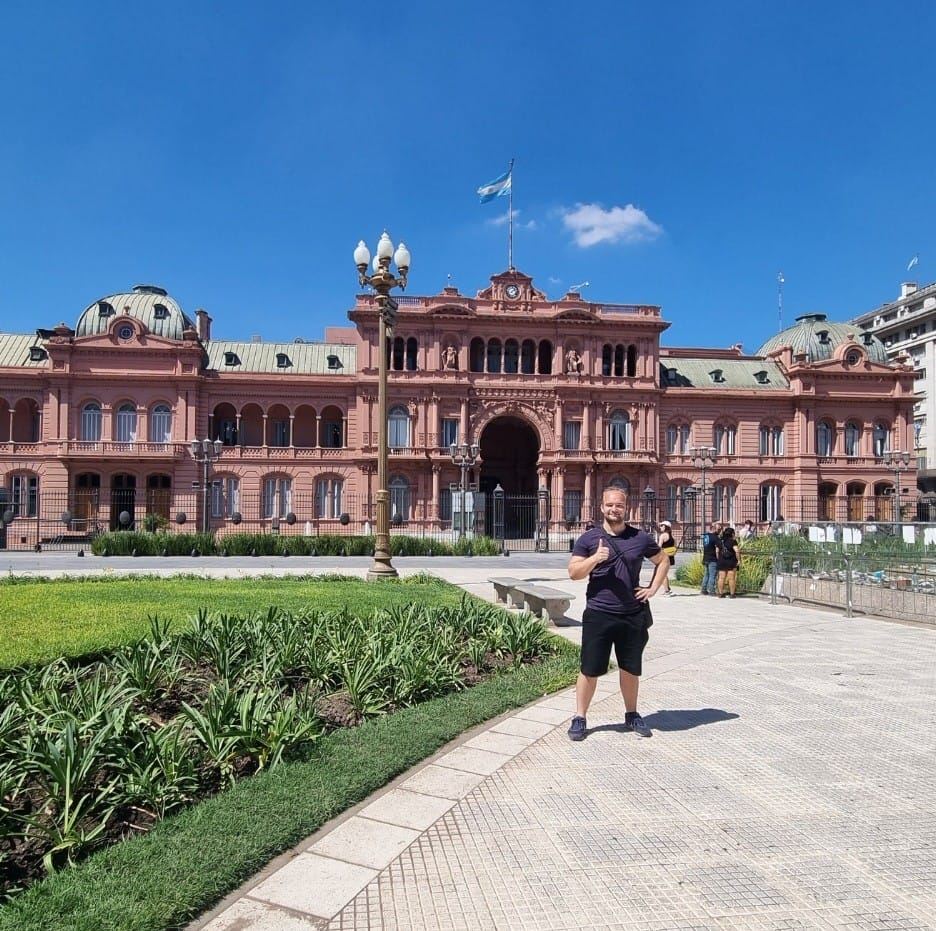
“To see with my own eyes how much theory meets practice in the region – that alone made it worthwhile to visit Argentina”, says Karolis Kasarauskas, graduate of Vytautas Magnus University (VMU), who spent the second semester of his master’s studies as a participant of the Erasmus+ exchange program at the University of Belgrano in Buenos Aires, the capital of Argentina. In the student’s words, it is a very interesting country full of contrasts, to put it in Spanish – otra parte del mundo (the other side of the world).
Regional Challenges as an Incentive for a Future Political Scientist
Karolis claims that, from the beginning of his studies, South America was not just a direction for him but also a personal scientific challenge. “I wrote my bachelor’s thesis about Latin American countries, specifically about U.S.-Brazil relations. My master’s thesis was about the USA’s and China’s interests in Latin America. Thus, I wanted to spend time in the region and experience everything firsthand”, he explains.
When selecting the country for study exchange, his jumping off point was not just the academic curriculum but also the security situation and language proficiency: Mexico, Colombia, and Brazil were rejected for those reasons. Karolis found the University of Belgrano to be the most attractive, because here he could study subjects of politics, history, and economics. Moreover, he had the opportunity to write a research paper and acquire a Latin American studies certificate. “Regionally, Argentina is a relatively safe country, which also has a rather strong education system. Those were important factors as well that determined my choice”, he adds.
Palace of the Argentine National Congress (photo from personal archive)
In his research paper, Karolis examined U.S.-Latin American relations during the first years of Donald Trump’s and Joe Biden’s terms, respectively. His supervisor was a teacher who was not just a theoretician but also someone with experience in political practice. This allowed the student to look at the region’s issues from a completely different perspective and also delve deeper into Argentina’s “informal” political practices that play an important role in the country’s rule.
While visiting South America for the first time, Karolis faced bureaucratic obstacles. First, he had to take care of the documents, which was a prolonged process due to Argentina’s bureaucratism. The matter of the visa alone forced him to travel to Warsaw, where Argentina’s embassy is located, twice.
Quite a bit of time also had to be spent on practical issues: the search for a place to live and budgetary planning. According to Karolis, Argentina’s university system does not provide students with dormitories: rent is usually offered by families, and students from Western Europe or the U.S. become their main clients. Karolis lived in a student apartment together with other Argentines.
Arriving in February of 2024, the student found the country in the midst of a crisis: “When I came, Argentina was experiencing a kind of shock therapy period, because it was shortly after the election of Javier Milei, who had started implementing highly radical economic reforms in the country; so, there was quite a bit of chaos”, he recalls. The public transport reform, which was implemented at the time, presented additional challenges because the issuing of new public transport cards was disrupted: without the so-called Sube card, one was not able to use public transportation, because purchasing tickets by cash was simply impossible due to inflation.
Obelisco de Buenos Aires (photo from personal archive)
Before the trip, Karolis had planned to live according to the dual exchange rate, which allowed tourists to pay less by cash. However, when he arrived, everything had already changed, and using a bank card became even cheaper. This detail helped him understand how quickly the country’s economic situation was changing and how important it was to constantly follow the news.
Carnivore Paradise and Italian Influence
Even though the country was in crisis, expenses in Argentina were not high. “Eating in restaurants is a bit cheaper than in Lithuania, but the cheapest way was to order food via an app which offered discounts. You could order a large steak for about three euros, so typically it was not worth cooking at home”, Karolis explains, adding that imported goods, such as Coke, were more expensive than the local ones. However, by now the situation has already changed, because Milei’s administration has cut import tariffs; as a result, goods from abroad became cheaper, whereas the price of local production increased.
Although Argentina has a long coastline, fishing is not traditionally popular, and the most important element in the kitchen is meat and its products. The most popular Argentine dish is asado, which is an assortment of various barbecued meats served with red wine. Karolis says that a vegan friend of his had to transition to a vegetarian diet because otherwise she would not have been able to eat properly.
Unlike countries such as Bolivia or Peru, the traditions of other Argentine dishes hail not from the South American Indigenous peoples but from Europeans, more specifically – Italians. “Many people think that Latin America is a very homogenous region. However, Argentina, Uruguay, and a part of South Brazil are highly Europeanized areas with large populations of migrants from South Italy. In Buenos Aires, you can sometimes feel like you are in Europe, because many people there hail from Europe, which makes this part of the South American continent quite distinct from other areas of the region”, Karolis claims.
Plaza de Italia (photo from personal archive)
Italian influence is evident in Karolis’ favourite dish, which is popular in Argentina: milanesa napoletana, a breaded steak topped with cheese and tomato sauce. Moreover, Argentines are very fond of mixing Italian liquor fernet with Coke. Karolis notes that this drink alone is the reason for high consumption of Coke in the country.
Argentina’s official language is Spanish; practically no one here speaks English. While lectures at the university were held in English, local life is all Spanish. That was not an obstacle for the VMU student, as he had already studied Spanish before arriving.
Political and Economic Situation is Important When Planning a Trip
Buenos Aires is one of the largest cities in the world. Even though its population is about 18 million, including provinces, Karolis did not find it difficult to find his way around. During the first days, Google navigation was a great help; however, just a few weeks later, he already had no trouble traveling by himself. The university is reachable on foot or by underground, which does not have many lines and can easily reach the main locations of Buenos Aires.
Downtown Buenos Aires (photo from personal archive)
Still, even though Argentina is considered to be a safe country, when travelling around the region, one should avoid certain places, especially the city of Rosario, follow political news and keep track of the protest period. “When I was there, public transport drivers were on strike, so using it to get to the university was impossible; also, my colleague attended a protest, where his wallet and phone were stolen”, Karolis points out.
He also advises taking into account that weather conditions and seasons in Argentina are radically different from Lithuania. “When it’s summer for us, it’s winter for them, and vice versa. My flight was in February, so I arrived to Buenos Aires wearing winter boots, and I was greeted by 30-degree heat”, Karolis remembers.
The VMU graduate observes that in winter, the temperature is often around 10–15 degrees Celsius; this period makes it easy to recognise the tourists. Karolis himself walked around in shorts, while the locals wore winter coats. Apart from the high heat, tourists in Buenos Aires are also greeted by lots of mosquitoes. Luckily, Karolis avoided catching dengue fever, even though he was badly bitten.

Co-Funded by the European Union. Views and opinions expressed are however those of the author(s) only and do not necessarily reflect those of the European Union or the European Education and Culture Executive Agency (EACEA). Neither the European Union nor EACEA can be held responsible for them.

